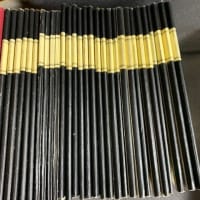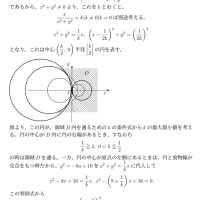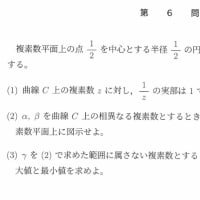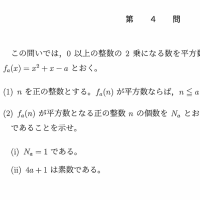昔,同じ職場の英語の先生から下の京大の入試問題について話す機会がありました.英語の問題で,数学の話が登場してるのだけど,どう思いますかという話からでした.実はたまたま,この出典の本を持っていて,通読はしていなかったのですが,少しは読んでいたので,覚えていて,びっくりしました.出典の本は,
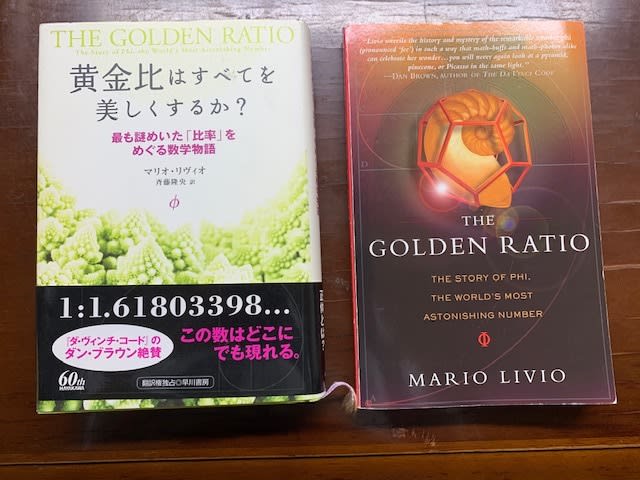


で,1ページから3ぺーじまでですが,右は2002年出版の原本で,左は2005年12月出版の日本語訳の本です.そこで話した内容は,どうして数学の内容の英文が出題されたのかということです.
私の学生時代の知り合いに英文科の人がいて,その人の友人でWさんという方がいて,なんと,もと数学を専攻していた方がいました.その方が結局数学から英語に専攻を変えることになるときにお話を聞いたことがあり,その方が,その後京大の教官になられていたので,この入試の英文はWさんが出題者なのではないかと話した覚えがあります.これ以上書くとWさんが誰かと分かってしまいます(それほど有名なかたです.数学だけでなく,ほかにも傑出したある分野の専門家でもある)ので書きませんが.
受験業界では,京大の傾向云々というフレーズで入試問題を分析していますが,もっと広い視点で出題者は問題を考えていることを意識させられた問題でした.
数学で,この英文を教材にして,課外授業をやってみるのも面白いと思います.入試問題も大学と高校教育を接続する一つの装置と見て,そこに焦点を当てて受験技術というのではなく,教材としての価値を教員が付加することは,今後も求められていくのではないでしょうか.そう思うのは,あまりにも問題とその解答例を配布して,覚えておくみたいな雰囲気が以前より強くなりつつあるのではないかと危惧しているからです.
パソコン上で,過去問等が簡単にダウンロードでき,編集,印刷可能なシステム(例えば数研のスタディーエイド等)の利用が多くなって生きて,それに依存している教員も多く,その結果,教員の教材研究が以前より,減少しているような気さえするからです.特に若い先生にその傾向が強く感じるのは私だけではないようです.
以前,当時の京大教授の上野先生から聞いた話ですが,後期試験で理学部に入学してきた学生に,「どうしてこんな英文が読めないのか」と聞いたら,「私は後期試験で合格して,英語は必要なかったから」とか,数学の問題はまず小問の(1)だけを全部解いていって,部分点を稼ぐようにと指導されたとか.全く大学の意図しているのとは違った教育が高校で行われていることに愕然とされて,後期試験の廃止や数学の小問の廃止などにつながったようです.
入試問題に関して,もっと大学側と高校側での議論の場があっていいのではないかと思います.そして,入試問題を切り口に高大接続の教育に関してもっと現場同士の議論の場の機会が増えることを期待したいものです.
京大過去問 2005年
第1問 次の文章を読んで、下の問いに答えなさい。
The famous British physicist Lord Kelvin(1824-1907), after whom the degrees in the absolute temperature scale are named, once said in a lecture: “When you cannot express it in numbers, your knowledge is of a meager and unsatisfactory kind.” He was referring, of course, to the knowledge required for the advancement of science. But numbers and mathematics have the curious tendency of contributing even to the understanding of things that are, or at least appear to be, extremely remote from science. In a famous story by Edger Allan Poe, Detective Dupin says: “We make chance a matter of absolute calculation. We subject the unlooked for and unimagined to the mathematical formulae of the schools.” At an even simpler level, consider the following problem you may have encountered when preparing for a party: You have a chocolate bar composed of twelve pieces; how many snaps will be required to separate all the pieces? The answer is actually much simpler than you might have thought. Every time you make a snap, you have one more piece than you had before. Therefore, if you need to end up with twelve pieces, you will have to snap eleven times. More generally, irrespective of the number of pieces the chocolate bar is composed of, the number of snaps is always one less than the number of pieces you need. Even if you are not a chocolate lover yourself, you realize that this example demonstrates a simple mathematical rule that can be applied to many other circumstances. But in addition to mathematical properties, formulae, and rules (many of which we forget anyhow), there also exist a few special numbers that are so ubiquitous that they never cease to amaze us. The most famous of these is the number of pi(π), which is the ratio of the circumference of any circle to its diameter. The value of pi, 3.14159…., has fascinated many generations of mathematicians. Even though it was defined originally in geometry, pi appears very frequently and unexpectedly in the calculation of probabilities. A famous example is known as Buffon’s Needle, after the French mathematician Comte de Buffon (1707-1788), who posed and solved this probability problem in 1777. He asked: Suppose you have a large sheet of paper on the floor, ruled with parallel straight lines spaced by a fixed distance. A needle of length equal precisely to the spacing between the lines is thrown completely at random onto the paper. What is Figure 1the probability that the needle will land in such a way that it will intersect one of the lines, as in Figure 1? Surprisingly, the answer turns out to be the number 2/π. Therefore, in principle, you could even evaluate π by repeating this experiment many times and observing in what fraction of the total number of throws you obtain an intersection. Pi has by now become such household word that film director Darren Aronofsky was even inspired to make a 1998 intellectual thriller with that title.
From The Golden Ratio: The Story of PHI, the World’s Most Astonishing Number by Mario Livio, Broadway Books
(1) 物理学者Kelvinの講演から引用したセンテンスが1つある。それを和訳しなさい。
(2) 探偵Dupinの言葉を引用したセンテンスが2つある。それらを和訳しなさい。
(3) You have a chocolate bar composed of twelve pieces: how many snaps will be required to separate all the pieces?という問いに対して、「より一般的」な答えとなっているセンテンスが 1つある。それを和訳しなさい。
(4) Buffon’s Needleの問いを構成しているセンテンスが3つある。それらを和訳しなさい。
(5) Buffon’s Needleの問いに対する答えとなっているセンテンスが1つある。それを和訳しなさい。











